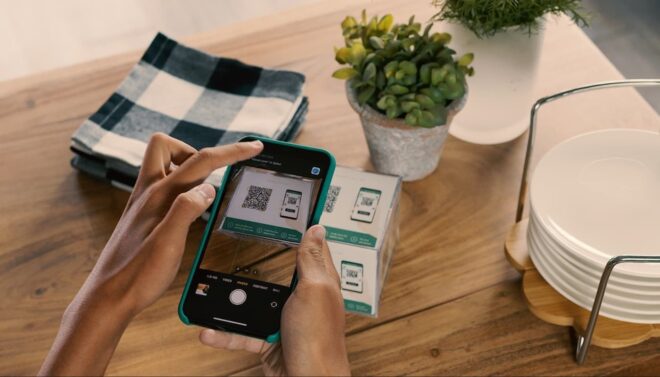Using memberships and subscriptions to grow your business
Editorial Team
5 min read
There’s nothing new about membership and subscription models. The newspaper industry was built on subscriptions, and memberships have been around much longer than that. In recent years, we’ve seen booms in subscription for everything from software to streaming platforms to clothing rentals and more. Memberships have long proven successful for fitness businesses, bulk grocery retailers, and many other sectors.
What’s the difference between a membership and a subscription?
In light of the ongoing pandemic, membership and subscription models are proving to be surprisingly useful for certain industries. Food and beverage businesses, retailers, and other service industries are successfully implementing these models to increase customer loyalty, provide safe ways for customers to continue to engage with their businesses, and generate revenue in uncertain economic times.
Subscriptions and memberships are similar in the way they provide consistent revenue for businesses. They differ in what is offered to the customer. A subscription offers access to resources or products for a designated period of time, while a membership provides customers with status as a member to a group or organization.
How subscriptions and memberships can help small businesses
Memberships and subscriptions can be used independently of each other, or to complement each other. How your business can best benefit from memberships and subscriptions depends on your industry and how you intend to use these models to grow revenue. Let’s take a look at a few industries.
Food and beverage
Community Supported Agriculture (CSA) programs have long relied on subscription models to bring meat, poultry, and produce to consumers directly from the farm. Since the beginning of the pandemic, CSAs have seen a spike in demand. As consumers navigate concerns over grocery store safety and working conditions in meat-processing facilities, CSAs provide an attractive alternative for consumers to access the foods they want and need.
In fact, the “pay one fee for access” models have been around for a while in table service dining, too. Think of the all-you-can-eat buffet. For a single fee, you get to eat as much or as little as you like from the plethora of offerings. As the pandemic continues, we’re seeing more and more table service and counter service retailers offer subscription models to draw customers.
A major fast-casual chain has already launched a coffee subscription service. The subscription, which, incidentally, was already in the works before the pandemic, has become appealing as a way to entice customers back into the restaurants.
Other restaurants have shifted their offerings to cater to a customer base that’s stuck at home. Local restaurants are providing make-at-home kits for some of their signature dishes. A make-your-own pizza kit, for example, is a fun activity to do at home while giving customers more control over their food prep and safety measures. If your business is already offering something like this, you could easily transition to a weekly subscription model. A “Friday Night Pizza Club” gives customers something to look forward to, and it lets them know how they can continue to support your business, even if they’re not yet comfortable returning in person.
The same goes for a “Saturday Afternoon Ice Cream Club.” In this case, customers could subscribe for a regular delivery (or pick up) of a carton of ice cream. These sweet treats keep customers engaged, and they also provide new ways for people to establish routines when their worlds have been upended. Ice cream as a public service? Yes, please!
Retail
Retail may be the industry that’s seen the biggest boom in the subscription business in light of the pandemic. According to Recurly, a company that manages subscription programs, subscriptions in the “Consumer Goods” sector have gone up by as much as 145%. That’s a staggering increase, especially for an industry where brick-and-mortar business has been stymied.
Subscriptions for products like coffee beans and clothing retailers have more established track records. While in the past, those niches were occupied by companies that specialized in subscription-only business, smaller boutiques and businesses now have the opportunity to offer their own spin on the subscription model.
Whether you sell board games and puzzles, homewares, clothing, or even stationery, there’s an opportunity to shift into a subscription model. A home goods store could specialize in a monthly subscription box filled with treats like candles to make home feel cozier. A game store might want to offer a puzzle subscription service. A bookstore could use a subscription to create a monthly book club, complete with an optional video book discussion. Whatever your industry, there are myriad ways to create a retail subscription that boosts business and fosters community.
Services
Service industries often rely on in-person business. If people are skittish about returning in person, you might want to consider a membership model. How would that work? Let’s take a look. Say you run a salon. You can offer a yearly membership that provides customers with discounted rates for services and products. The discounted rates may entice customers to finally schedule that haircut, or it may just signal their intention to come back when they feel comfortable.
In the interim, you have more working capital to pay your expenses and keep your business thriving. Membership fees can also offset the losses that come from discounting products, and it may drive customer to choose your business instead of a major chain when they need to replenish.
Who’s seeing the biggest boom?
Overall, retail has seen the largest growth in subscriptions since the start of the pandemic. Food and beverage businesses are finding new, innovative ways to entice customers with their subscription models, and there’s still room for growth. In the service industry, these models are more untested. But that only means there’s potential, untapped revenue if you’re willing to do a little work.
Related Posts
5 things you can learn from Small Business Revolution
Restaurants enhance touchless dining experience with Scan to Order from Clover
Popular Topics
Stay in touch
Sign up and learn more about Clover.
Thank you for your subscription!
More posts about starting a small business
eBook





